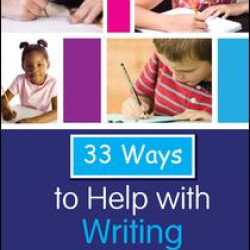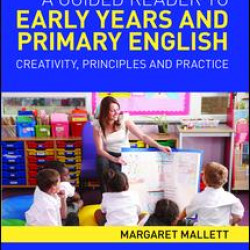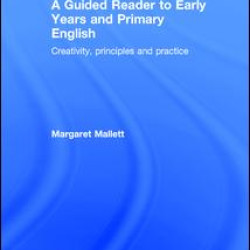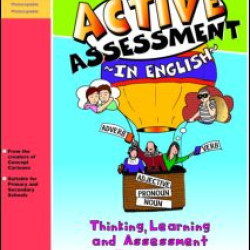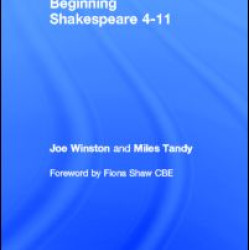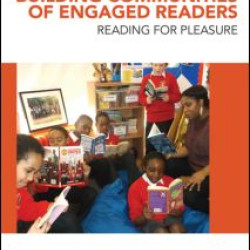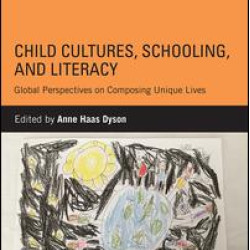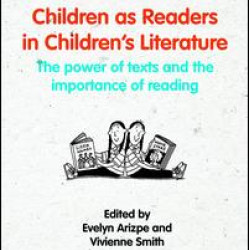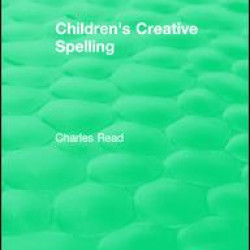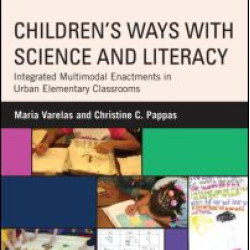Language & Literacy
Brand: Taylor & Francis
Model: Stock
Thirty-Three Ways to Help with Writing equips teachers and teaching assistants with a wide range of practical resources to help children who are having difficulties learning the basic skills of writing...
₹7,343.26 ₹9,179.08
Brand: Taylor & Francis
Model: Stock
The Guided Reader to Primary and Early Years English covers all crucial areas of literacy including:- reading, writing, speaking, listening, spelling, punctuation and grammar. It also covers a wide range of text types including, fiction, non-fiction, poetry, biography, multimedia and play scripts._x..
₹2,349.34 ₹2,936.68
Brand: Taylor & Francis
Model: Stock
The Guided Reader to Primary and Early Years English covers all crucial areas of literacy including:- reading, writing, speaking, listening, spelling, punctuation and grammar. It also covers a wide range of text types including, fiction, non-fiction, poetry, biography, multimedia and play scripts._x..
₹8,078.40 ₹10,098.00
Brand: Taylor & Francis
Model: Stock
The authors show how thinking, learning and assessment can be linked together in a creative and integrated fashion, so that thinking promotes learning, learning enables assessment to take place and assessment acts as a stimulus to both thinking and learning...
₹2,202.46 ₹2,753.08
Brand: Taylor & Francis
Model: Stock
Beginning Shakespeare 4-11 offers a sound rationale for teaching Shakespeare in primary schools and shows how to engage children with Shakespeare through story, through the very best of early years practice, and through his rich and sensual language. It also illustrates how engagement with the plays..
₹2,202.46 ₹2,753.08
Brand: Taylor & Francis
Model: Stock
Beginning Shakespeare 4-11 offers a sound rationale for teaching Shakespeare in primary schools and shows how to engage children with Shakespeare through story, through the very best of early years practice, and through his rich and sensual language. It also illustrates how engagement with the plays..
₹8,078.40 ₹10,098.00
Brand: Taylor & Francis
Model: Stock
Boys, Masculinities and Reading explores elementary students’ interpretations of their experiences of reading and the contextual influences that impact those experiences. Examining the perceived, generalized "crisis" of boys’ underperformance in reading and literacy, Scholes identifies the factors t..
₹8,078.40 ₹10,098.00
Brand: Taylor & Francis
Model: Stock
Reading for pleasure urgently requires a higher profile to raise attainment and increase children’s engagement as self-motivated and socially interactive readers. Building Communities of Engaged Readers provides an inspiring and accessible account of a collaborative research and development project ..
₹2,496.22 ₹3,120.28
Brand: Taylor & Francis
Model: Stock
Through analysis of case studies of young children (ages 3 to 8 years), situated in different geographic, cultural, linguistic, political, and socioeconomic sites on six continents, this book examines the interplay of childhoods, schooling, and, literacies. Written language is situated within partic..
₹2,643.10 ₹3,303.88
Brand: Taylor & Francis
Model: Stock
Even with advances in technology challenging our understanding of texts and literacy, we continue to expect books to be the main source of children’s reading. This text considers the multiple images of children as readers within children’s literature in English and brings together a group of disting..
₹2,496.22 ₹3,120.28
Brand: Taylor & Francis
Model: Stock
In this study, originally published in 1986, Professor Charles Read examines the ways in which pre-school and primary children create spellings – or misspellings, as they appear to be. He focuses on the hidden phonetic bases for some frequent patterns in young children’s spelling, both in and out of..
₹5,875.20 ₹7,344.00
Brand: Taylor & Francis
Model: Stock
This book offers specific examples and empirical evidence of how multimodal integrated science-literacy curriculum and teaching in urban primary-grade classrooms give students opportunities to learn science and to develop positive images of themselves as scientists...
₹3,010.30 ₹3,762.88


